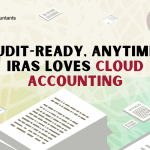Singapore is an island country and city-state in Southeast Asia’s maritime region. The country has emerged as a top choice for global entrepreneurs due to its powerful economy, strategic location, and business-friendly climate.
Hence, Singapore has drawn many investors and entrepreneurs to set up a business in the country, so they need to learn the rules and regulations, particularly the tax landscape.
In this article, we will learn more about the basic concept of withholding tax in Singapore.
What is Singapore Withholding Tax?
Singapore withholding tax is the tax withheld and paid to the Inland Revenue Authority of Singapore (IRAS) when a non-resident company or individual derives income from a Singaporean source for services rendered or work performed in Singapore. Singapore’s tax authority is the IRAS.
What is Singapore’s Average Employer Tax Rate?
Corporate income tax on chargeable income is charged at a fixed rate of 17%. This applies to both domestic and foreign businesses.
In Singapore, there is no income tax withholding, and employees are responsible for completing annual forms with the Inland Revenue Authority of Singapore (IRAS).
Employee income tax rates are presently as follows:
- 0%: 0 to 20,000 SGD
- 2%: 20,000-30,000 SGD
- 5%: 30,000-40,000 SGD
- 7%: 40,000-80,000 SGD
- 5%: 80,000-120,000 SGD
- 15%: 120,000-160,000 SGD
- 18%: 160,000-200,000 SGD
- 19%: 200,000-240,000 SGD
- 5%: 240,000-280,000 SGD
- 20%: 280,000-320,000 SGD
- 22%: more than 320,000 SGD.
Singapore Employer Contributions
Employers in Singapore are not compelled to withhold taxes; nonetheless, contributions to social security schemes, the Skill Development Levy (SDL), and the Foreign Workers Levy are required.
Employers contribute 17% of monthly salaries to the Central Provident Fund (CPF), Singapore’s national pension program. This is subject to a maximum contribution base of SGD 6,000 per month; hence the maximum monthly payment is SGD 1,020.
Singapore Employer Contributions
Employers in Singapore are not compelled to withhold taxes; nonetheless, contributions to social security schemes, the Skill Development Levy (SDL), and the Foreign Workers Levy are required.
Employers contribute 17% of monthly salaries to the Central Provident Fund (CPF), Singapore’s national pension program. This is subject to a maximum contribution base of SGD 6,000 per month; hence the maximum monthly payment is SGD 1,020.
Employers must also pay a mandatory SDL for each of their employees. The amount payable for each employee is 0.25% of their monthly total wages, with a monthly minimum contribution of SGD 2 and a maximum payment of SGD 11.25.
In Summary
Understanding Singapore’s withholding tax structure is critical for businesses wishing to work with non-resident corporations and individuals. Non-resident payments are taxed at various rates and keep in mind that Singapore has signed the Avoidance of Double Taxation Agreement with numerous countries to avoid double taxation.
Payments of withholding tax in Singapore must adhere to the IRAS’s obligations and criteria and must be made on time, as the individual would suffer penalties if the tax is not paid or is paid late.
So, contact EBOS Cloud Accountants today to discover more about how we can help you with your taxes and prevent penalties.







